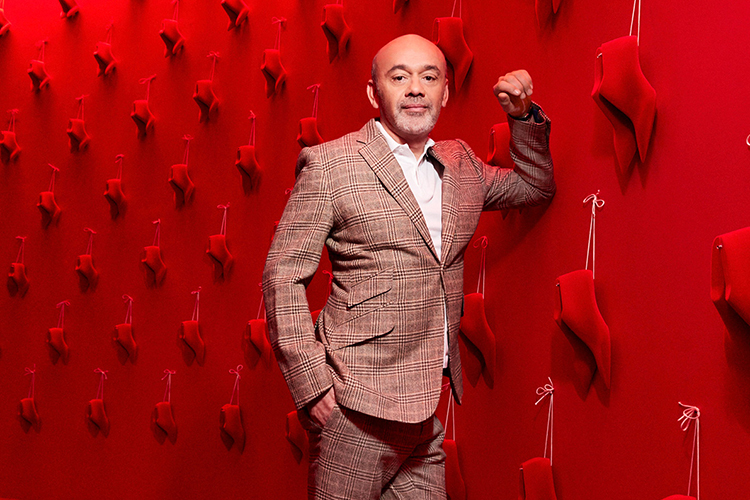The eyewear industry has made its stand in the global fashion market, seamlessly blending functionality with style. Eyewear has now become a very crucial point in fashion. In this landscape, Luxottica has emerged with a dominant hold on the market share. The company has adopted a model of both vertical and horizontal integration, involving itself in designing, manufacturing, distributing, and retailing its eyewear brands.
As we know, there exists an intricate relationship between eyewear and the fashion industry, where eyewear is no longer just a functional accessory but rather a symbol of personal style. In a market as such, the brand Luxottica has evolved to hold a monopolistic share in the eyewear industry.
BACKGROUND
The eyewear industry has experienced steady growth, propelled by factors like increasing visual impairments, fashion consciousness, and a rise in disposable income. Eyewear has transcended its utilitarian purpose, becoming a fashion statement in its own right. Celebrities and influencers endorsing eyewear brands have amplified their connection with fashion trends, making it an integral part of personal style expression.
With an estimated market share of around 80%, Luxottica warrants a closer examination of its impact on competition. Since its inception in 1961, Luxottica has expanded its reach across the eyewear industry through many pivotal acquisitions and mergers. Its portfolio now includes an extensive array of eyewear brands such as Ray-Ban, Oakley, and Persol, giving Luxottica unparalleled market power.
MONOPOLY AND ANTI-COMPETITIVE PRACTICES
Understanding competition law
Competition law serves as the cornerstone for modern economic regulation. The fashion industry, a dynamic and ever-evolving landscape, is not only characterized by creativity and trends but also by intense competition among brands vying for consumer attention and loyalty. The core principles of competition law include prohibiting monopolies, cartels, and abuse of dominance. Competition law safeguards consumer rights by fostering an environment where a multitude of competitors offer varied products. Empowering consumers with choices is crucial, particularly in an era when individuality and style are deeply intertwined. The enforcement of competition law aims to strike a delicate balance between enabling innovation and safeguarding consumer interests, which is particularly critical in dynamic industries like fashion and eyewear.
What is Luxottica’s position in the market?
Luxottica’s ascent to monopoly status has been fueled by a series of strategic acquisitions and mergers. Notable among these was its acquisition of Ray-Ban in 1999, solidifying its hold on iconic eyewear brands. The acquisition of Oakley in 2007 further expanded Luxottica’s dominance across both luxury and sports eyewear markets. These horizontal integrations granted Luxottica an unparalleled portfolio of brands, enabling it to dictate industry trends and set pricing standards. From manufacturing to retail, Luxottica has integrated vertically to an exceptional degree. Owning LensCrafters, Sunglass Hut, and other retail chains grants Luxottica the power to dictate the visibility and positioning of its products, as well as the ability to marginalize competing brands. This integration fosters an environment in which Luxottica’s products receive preferential treatment, thereby further reinforcing its market dominance.
The company’s global market reach and extensive brand portfolio play a pivotal role in shaping consumer perception. Many consumers may not be aware that seemingly distinct eyewear brands are all under the Luxottica umbrella. The dominance also raises concerns about reduced competition and consumer choice. Limited competition can lead to inflated prices, inhibiting consumers’ ability to access eyewear products at reasonable costs. Moreover, the consolidation of diverse brands under one entity may undermine the illusion of variety and choice, giving rise to concerns about monopolistic practices impacting consumer preferences. This issue is of paramount importance in the fashion industry, where self-expression through style is a central tenet.
How did the brand achieve its extensive market presence?
Luxottica’s control over both manufacturing and retail provides a unique opportunity to influence pricing strategies. Allegations have emerged that Luxottica employs price-setting practices that might limit fair competition. The vertically integrated structure enables Luxottica to control the entire pricing pipeline, from manufacturing costs to final retail prices. This control has led to concerns over the potential for inflated pricing and reduced consumer choices. The eyewear industry’s dependence on Luxottica for manufacturing and distribution further strengthens its position. Competitors struggle to access the same economies of scale and distribution networks that Luxottica commands, making it challenging for new entrants to gain a foothold. This further results in a cycle where Luxottica’s dominance perpetuates itself through barriers to entry.
Additionally, Luxottica’s exclusive licensing agreements with high-end fashion houses like Chanel and Prada have limited the availability of these brands’ eyewear to Luxottica-controlled distribution channels, thereby inhibiting competition and contributing significantly to its monopoly. Through these arrangements, Luxottica gains exclusive rights to design, manufacture, and distribute eyewear for luxury fashion houses, limiting competition for these brands’ eyewear offerings. This practice has inhibited market entry for other eyewear manufacturers and restricted consumers’ access to choices.
Luxottica’s monopoly potentially hampers innovation and stifles diversity in the eyewear market. With limited competition, there might be reduced pressure to innovate, leading to stagnation in product design and technology. Moreover, the dominance of a single player could deter smaller, innovative eyewear brands from entering the market, depriving consumers of fresh and creative choices.
CASE STUDIES: LEGAL ACTION AGAINST LUXOTTICA
Several jurisdictions have scrutinized Luxottica’s practices. Case studies from different regions, highlight how Luxottica’s practices have come under legal scrutiny and how competition authorities have responded.
As early as 2004, the Federal Trade Commission of the United States investigated Luxottica’s acquisition of Cole National, focusing on concerns of reduced competition in the optical retail sector. The acquisition would have granted Luxottica ownership of over 1,000 optometric locations and over 4,000 eyeglass frames. The fear was that Luxottica’s control over both eyewear brands and retail outlets could lead to higher prices and limited choices for consumers. To address these concerns, Luxottica had to agree to specific conditions to prevent anti-competitive effects. One key condition was that independent optometrists could lease space within Pearle Vision optical retail stores, allowing them to offer alternative eyewear brands alongside Luxottica’s products. This condition aimed to preserve competition and provide consumers with more diverse choices.
The European Commission fined Luxottica €125 million in 2014 for imposing vertical restraints that hindered retailers’ ability to stock and sell competing eyewear brands. It was found that Luxottica’s practices effectively limited consumer choice and retailers’ freedom to independently determine their product offerings. The fine sent a clear message that the European Union is committed to maintaining a competitive market where consumers have access to a variety of eyewear choices.
The Essilor Luxottica merger was another event in the company’s history that brought about a lot of scrutiny and imposed conditions. In Brazil, the Administrative Council for Economic Defense (Cade) closely examined Luxottica’s merger with Essilor in 2017. The merger combined two major players in the eyewear industry, sparking concerns about potential market concentration and its impact on competition. When data showed that the merged entity would control a significant share of the Brazilian market, Cade imposed certain conditions on the merger to address competition concerns. These conditions included divestiture of eyewear brands to independent third parties, and licensing agreements with competitors to produce and distribute certain brands providing access to Essilor’s advanced lens technology on fair terms to competitors.
Similarly, the French Competition Authority, in the landmark case French Competition Authority vs. Luxottica, investigated Luxottica’s practices within the eyewear industry. The authority found Luxottica engaging in antitrust practices that severely impacted competition and consumer choice. Luxottica had implemented a series of measures to maintain control over retail prices and restrict online sales. From recommending prices to the distributors and prohibiting discounts to penalizing non-compliant distributors, the authority found practices that had detrimental effects on free competition, consumer welfare, and the industry’s structure. The authority’s investigation culminated in a penalty of Euro 125 million for Luxottica. The investigation also revealed that clauses in license agreements between Luxottica and Chanel, as well as selective distribution agreements between Luxottica and authorized distributors for various luxury brands, effectively prohibited online sales for specific products.
TO WRAP IT ALL UP
Luxottica’s control over major eyewear brands enables the company to shape fashion trends. The dominance of a single entity over such an influential aspect of fashion warrants scrutiny to ensure that diversity and innovation thrive. Enforcing competition law is not solely a legal endeavour; political and economic factors also come into play. Luxottica’s international presence poses challenges in enforcing competition law consistently. Coordinating efforts among various jurisdictions can be complex due to differing legal frameworks, enforcement mechanisms, and regional economic considerations. Moreover, the rapidly evolving eyewear and fashion industries introduce new business models and distribution channels, necessitating the continual adaptation of competition law. Striking this balance is particularly challenging when considering the global significance of players like Luxottica.
Some argue that Luxottica’s integration and centralized control result in consistent product quality, improved distribution efficiency, and coordinated branding efforts. However, the counterargument emphasizes that these potential benefits should not come at the expense of stifled competition and reduced consumer choice. The challenge lies in finding a balance between quality and innovation while maintaining a competitive market.
Author: Rithwika Rarish, Student Editor at Fashion Law Journal


















